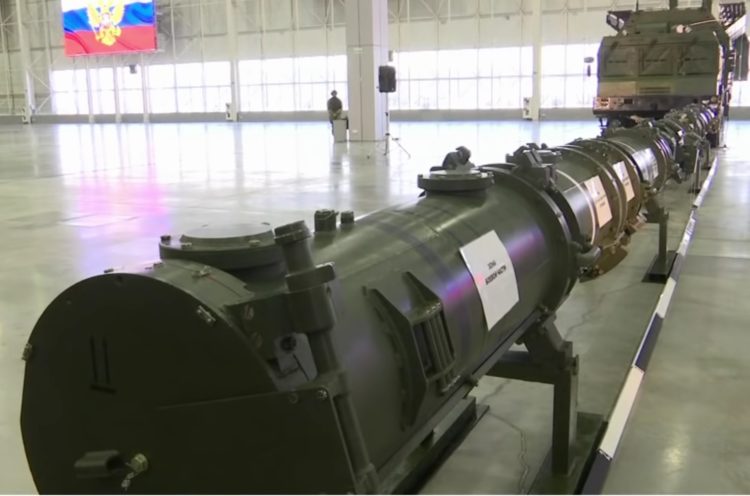The Intermediate-Range Nuclear Forces Treaty, or INF Treaty, has been the subject of diplomatic debate between the United States and Russia for months now. Although the agreement may be lengthy, the nuts and bolts of it are simple: It bans the development or use of nuclear or conventional missiles (as well as their associated launch platforms) that have ranges between 500–1,000 kilometers (310–620 mi) in the “short range” category and 1,000–5,500 km (620–3,420 mi) categorized as “intermediate” range.
At one time or another, the agreement has come into question by both Russian and U.S. leaders, but the current predicament is a bit different. According to U.S. intelligence, Russia developed and built a new missile platform that directly violates the language of the treaty. This makes the treaty all but useless to the United States, which must also compete with other non-signatory nations that have no compunction about developing similar platforms themselves (e.g. China). In effect, if Russia doesn’t follow the treaty, then America is simply barring itself from developing the same sort of weapons being fielded by its competitors. As a result, the Trump administration has signaled America’s intention to withdraw from the treaty unless Russia verifiably destroys their new platform.
Russia contends, however, that their new missile does not violate the terms of the treaty and is, instead, an updated version of an older platform built with a specifically reduced range. The 9M729 cruise missile, according to Moscow, is nothing more than an updated 9M728. They claim that, although it’s some 20 inches longer than its predecessor, its range is actually less than that of the legacy system by a bit more than six miles. According to Russia, the added length can be attributed to a “modernized onboard correction system” meant to improve the missile’s accuracy, leaving the fuel compartment identical in size to the missile’s predecessor.
Of course, with a slightly more efficient engine, the missile could feasibly travel farther on the same amount of fuel as the older platform, but the thing is, no one can even be certain that Russia is telling the truth about the size of the fuel supply in the first place. With that in mind, Russia took the unprecedented step of offering what they call “transparency” regarding the new missile. They have offered to invite journalists from all over the world to come see the missile themselves so they can confirm its technical details.
The United States and other Western nations declined Russia’s invitation, suggesting the planned event was a stunt that would offer no real insight into the technical capabilities of the missile. Russia, indignant, moved ahead with the event, which promptly drew headlines all over the world, highlighting Russia’s claims about the weapon and its range.
There’s just one problem: All Russia actually showed anyone was a metal pipe.
At the event, journalists were ushered into a hangar that contained two missile canisters, which, according to Moscow, are sealed with the missiles inside during the production process. As a Russian general discussed the various components of the missile platform, soldiers pointed to the related portions on the canister using laser pointers. The entire spectacle amounted to little more than Russia promising they aren’t violating the treaty.
“I think what we see now is Russia and probably the United States are both now into the ‘who’s to blame for the end of the treaty’ as opposed to trying to find a serious solution,” said Steven Pifer, former senior director in the National Security Council and ambassador to Ukraine. “Do we even know if there are missiles in those canisters? A real technical demonstration, to my mind, would have involved probably opening up the canister, even opening the missile—here’s the size of the fuel tanks, here’s the engine.”
For American officials, the event changed nothing. For the general public, however, media headlines touting only Russia’s remarks—rather than recounting the event—may sway perceptions. Nonetheless, it seems evident now more than ever that the INF Treaty will soon be a thing of the past, allowing both nations to develop new short- and intermediate-range missile platforms. Some contend that this development could undermine decades of peace in Europe, but that seems unlikely. There may be more missiles placed in or near Europe, but like most nuclear threats, mutually assured destruction remains an intact deterrent regardless of the size or shape of the nuclear threat.
Already have an account? Sign In
Two ways to continue to read this article.
Subscribe
$1.99
every 4 weeks
- Unlimited access to all articles
- Support independent journalism
- Ad-free reading experience
Subscribe Now
Recurring Monthly. Cancel Anytime.
It may actually be in the best interests of the U.S. to leave the treaty in any event, as China has rapidly presented itself as the more formidable security concern for American interests abroad. China is notably not hampered by such Cold War agreements with Russia, and by some estimates, already boast what may be the largest varied missile arsenal in the world.
You can see footage of the displayed canister below:










